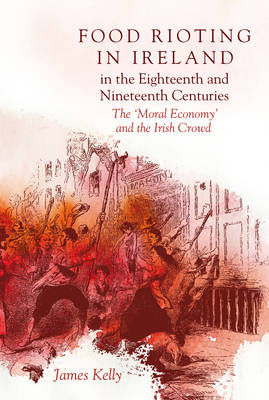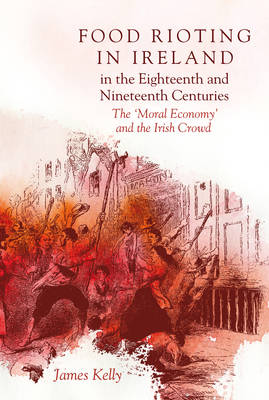
Door een staking bij bpost kan je online bestelling op dit moment iets langer onderweg zijn dan voorzien. Dringend iets nodig? Onze winkels ontvangen jou met open armen!
- Afhalen na 1 uur in een winkel met voorraad
- Gratis thuislevering in België vanaf € 30
- Ruim aanbod met 7 miljoen producten
Door een staking bij bpost kan je online bestelling op dit moment iets langer onderweg zijn dan voorzien. Dringend iets nodig? Onze winkels ontvangen jou met open armen!
- Afhalen na 1 uur in een winkel met voorraad
- Gratis thuislevering in België vanaf € 30
- Ruim aanbod met 7 miljoen producten
Zoeken
Food Rioting in Ireland in the Eighteenth and Nineteenth Centuries
The 'Moral Economy' and the Irish Crowd
James Kelly
Hardcover | Engels
€ 55,95
+ 111 punten
Omschrijving
Food rioting, one of the most studied manifestations of purposeful protest internationally, was practised in Ireland for a century and a half between the early eighteenth century and 1860. This book provides a fully documented account of this phenomenon, and seeks to lay the foundations for a more structured analysis of popular protest during a period when riotous behaviour was normative. Though the study challenges E.P. Thompson's influential contention that there was no 'moral economy' in Ireland because Ireland did not provide the populace with the 'political space' in which they could bring pressure to bear on the elite, its primary achievement is, by demonstrating the enduring character of food rioting, to move the crowd from the periphery to the centre. In the process, it offers a rereading of eighteenth- and early nineteenth-century Irish history, and of the public response to the Great Famine. [Subject: History, the Great Famine, Irish Studies, 18th & 19th Century Studies, Social History]
Specificaties
Betrokkenen
- Auteur(s):
- Uitgeverij:
Inhoud
- Aantal bladzijden:
- 272
- Taal:
- Engels
Eigenschappen
- Productcode (EAN):
- 9781846826399
- Verschijningsdatum:
- 27/10/2017
- Uitvoering:
- Hardcover
- Formaat:
- Genaaid
- Afmetingen:
- 160 mm x 236 mm
- Gewicht:
- 566 g

Alleen bij Standaard Boekhandel
+ 111 punten op je klantenkaart van Standaard Boekhandel
Beoordelingen
We publiceren alleen reviews die voldoen aan de voorwaarden voor reviews. Bekijk onze voorwaarden voor reviews.











